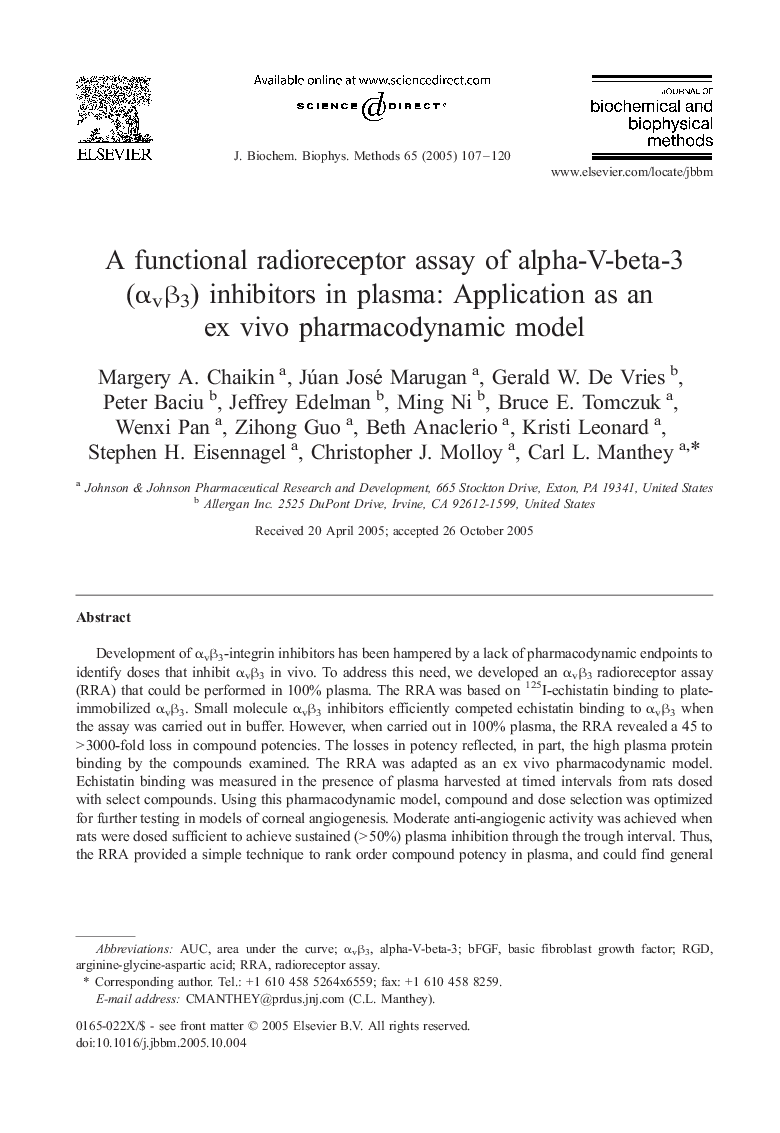| Article ID | Journal | Published Year | Pages | File Type |
|---|---|---|---|---|
| 9891231 | Journal of Biochemical and Biophysical Methods | 2005 | 14 Pages |
Abstract
Development of αvβ3-integrin inhibitors has been hampered by a lack of pharmacodynamic endpoints to identify doses that inhibit αvβ3 in vivo. To address this need, we developed an αvβ3 radioreceptor assay (RRA) that could be performed in 100% plasma. The RRA was based on 125I-echistatin binding to plate-immobilized αvβ3. Small molecule αvβ3 inhibitors efficiently competed echistatin binding to αvβ3 when the assay was carried out in buffer. However, when carried out in 100% plasma, the RRA revealed a 45 to > 3000-fold loss in compound potencies. The losses in potency reflected, in part, the high plasma protein binding by the compounds examined. The RRA was adapted as an ex vivo pharmacodynamic model. Echistatin binding was measured in the presence of plasma harvested at timed intervals from rats dosed with select compounds. Using this pharmacodynamic model, compound and dose selection was optimized for further testing in models of corneal angiogenesis. Moderate anti-angiogenic activity was achieved when rats were dosed sufficient to achieve sustained (> 50%) plasma inhibition through the trough interval. Thus, the RRA provided a simple technique to rank order compound potency in plasma, and could find general use as an ex vivo pharmacodynamic assay to select compounds and doses for preclinical and clinical proof-of-principle studies.
Keywords
Related Topics
Life Sciences
Biochemistry, Genetics and Molecular Biology
Biochemistry
Authors
Margery A. Chaikin, Júan José Marugan, Gerald W. De Vries, Peter Baciu, Jeffrey Edelman, Ming Ni, Bruce E. Tomczuk, Wenxi Pan, Zihong Guo, Beth Anaclerio, Kristi Leonard, Stephen H. Eisennagel, Christopher J. Molloy, Carl L. Manthey,
